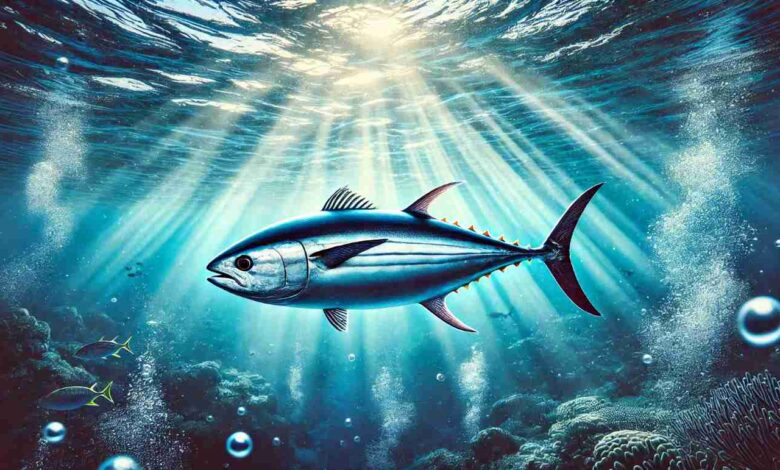How Many Listao Tuna Are Left in the World?

Listao tuna, also known as skipjack tuna (Katsuwonus pelamis), is one of the most abundant tuna species globally. It is a crucial component of the world’s marine ecosystems and is heavily relied upon by fisheries for its economic value. This article will provide a detailed look into the current status of listao tuna populations worldwide, the factors affecting their numbers, and the efforts being made to ensure their sustainability.
Importance of Listao Tuna
A key player in environment and economy They are at the top of their food chain and eat a wide variety of sea animals including squid, small fish, & crustaceans. They help to control the populations of other species by keeping marine food webs in check. Skipjack tuna is an economically important species and one of the most commonly canned fish in global seafood markets, supporting major small-scale fisheries as well as large industrial fishing operations around the world. Fishing pressures have not taken as big of a toll on skipjack tuna because they are able to grow and reproduce more quickly than some other species, but overfishing can occ
Current Population Status
Compared to other tuna species, listao tuna populations are most often labeled as being healthy worldwide. According to the International Seafood Sustainability Foundation (ISSF), skipjack tuna stocks in most oceans are not overfished, including those in the Western and Central Pacific Ocean (WCPO), as well as the Eastern Pacific Ocean. Most of them are under quite good management, and the species is fairly resilient. Yet, fishing practices and conservation issues threaten to make these species decline unless proper management is figured out.
In some areas, like the Indian Ocean, overfishing has reduced populations of similar species (like yellowfin tuna) by as much as half during thirty years. This underscores the current risk of overfishing, which also applies to skipjack tuna if not managed with due caution.
Threats to Listao Tuna Populations
Despite being relatively abundant, listao tuna faces several significant threats:
Overfishing: There is an enormous demand for tuna (especially canned) and many populations are overfished. In fact, the use of some advanced fishing technologies such as purse seine nets and fish aggregating devices (FADs) have even enabled these fisheries to capture unprecedented quantities of skipjack tuna. Despite the population of skipjack being traditionally robust, a spike in consumer demand or looser fishing restrictions could potentially overfish these stocks. The stock needs to be regulated (e.g. the amount of fishing effort allowable on a regular basis) and managed, or it will likely cause drastic declines in fish stocks outside these protected areas.
Bycatch and Juvenile Fishing: Another issue is bycatch, the inadvertent catching of young tuna or any other unintended species. The young of yellowfin and bigeye are often associated with juvenile skipjack, which means that bycatch of the former species can have broader impacts on all three stocks. Maintaining healthy tuna stocks requires minimizing bycatch.
Illegal, Unreported, and Unregulated (IUU) Fishing: Illegal fishing activities are still a major threat. Weak or absent regulation and control in some areas can permit tuna, particularly skipjack, to be overfished capacity such that it could hinder conservation approaches ultimately resulting a reduction of population sizes.
Conservation Efforts and Management Strategies
This management, Pope says, is critical in the sustainability of listao tuna populations. In order to regulate tuna fisheries worldwide, Regional Fisheries Management Organizations (RFMOs) have been set up. These agencies govern factory-controlled fishing of tuna by setting catch limits, monitoring fishery activities, and controlling types of gear used in order to reduce the environmental impact caused due to tuna fishing.
Catch Limits and Seasonal Closures: Some regions have implemented catch limits to prevent overfishing. A related conservation technique is the seasonal closures designed to give tuna populations time to breed, and if necessary, are a method used in certain areas of our fishery management system.
Decrease in Bycatch: As fisheries move towards using more selective fishing gear, successes have been achieved with regards to reducing bycatch. For example, the adoption of FADs that do not entangle and are biodegradable can minimize bycatch capture incidents, including juveniles.
Support from Other Countries: Listao tuna cannot be preserved without the support of all these titans. As tuna are migratory species that cross multiple national borders, countries must cooperate to manage their fisheries sustainably. This can be supported by international agreements, as well as the support of organizations like the Marine Stewardship Council (MSC) that also help to bring about sustainable fishing practices worldwide.
The Road Ahead: Challenges and Opportunities
While listao tuna are in a relatively better state than some other species, there remains a number of critical hurdles we need to overcome to ramp up their long-term sustainability:
Climate Change: Climate change is a major global threat to tuna and other species. Variations in sea temperature and changes to ocean currents will impact the migration of tuna, their breeding, and prey availability, which can lead to unpredictable fluctuations in population dynamics.
Presuming Demand: With increasing global population and the widespread popularity of tuna as a food source, demand for tuna is ever-increasing. These changes in dynamics justify the need to invest more efforts in sustainable fishing practices before it is too late and overfishing ends up creating irremediable issues.
Adherence to Efficient Management Plans: The viability of all biodiversity conservation programs chiefly relies on adherence and sustainable execution of management plans. To protect fish populations, it will push for tougher measures to combat illegal fishing and more research on setting sustainable catch limits based on predictions of tuna catches at different locations.
The Bottom Line
Skipjack tuna, also known as listao, tunabonito or arctic bonito is the most resilient of all other species. This type of fish species has a high rate of female fecundity and growth in length. But they are not immortal. Further measures to ensure sustainable fishing practices, global collaboration, and strong management strategies are also needed if we want the natural curiosity of rare species such as these unique sharks to continue beyond our lifetimes.
The health of listao tuna populations is not just about saving a fish stock, it means protecting the oceans and marine ecosystems that depend on them and allows human communities to live. Protecting these populations will require the global and local stakeholders—from governments to fishers to consumers alike—making a concerted effort towards sustainable practices that preserve listao tuna as well as other marine species. Lessons from managing other tuna species and their fisheries can inform the way forward, helping to keep skipjack abundant in the world’s oceans.




